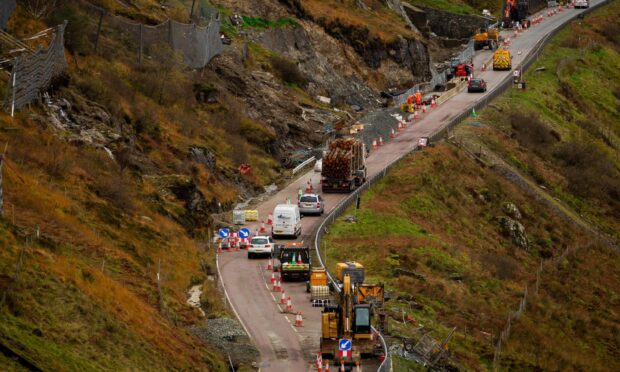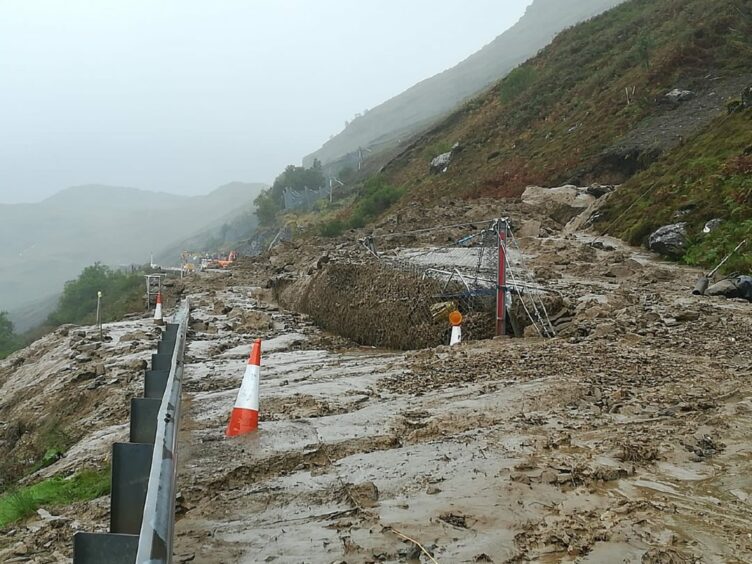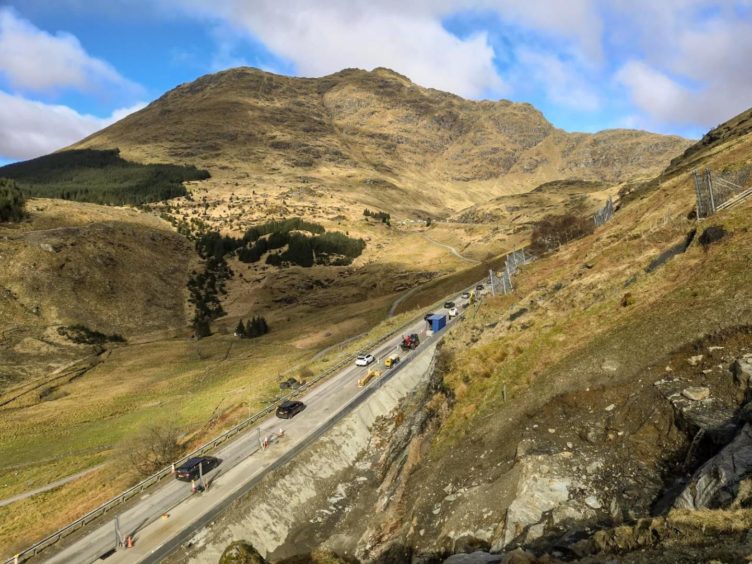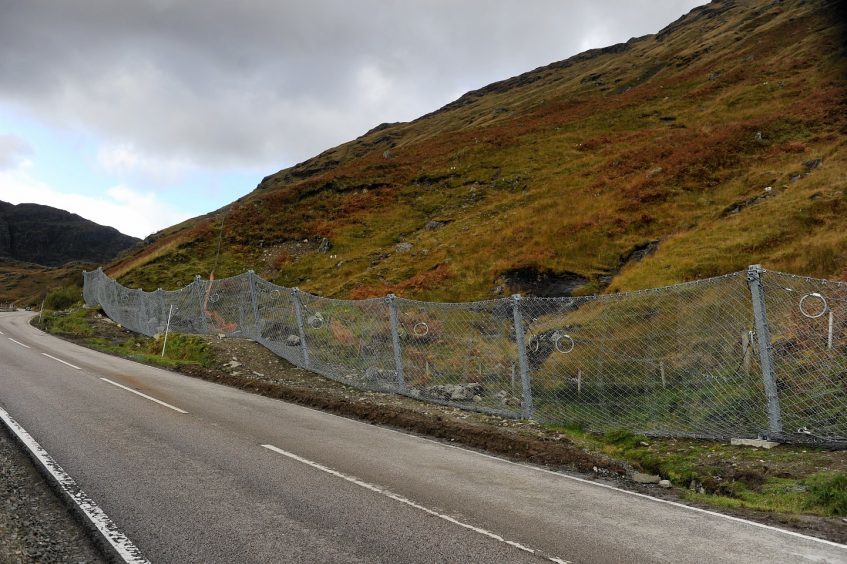Despite surely having one of the most evocative names in transport, the Rest and Be Thankful section of the A83 has been beset with controversy for years.
The A83 runs from the western shore of Loch Lomond to Campbeltown, via Loch Fyne.
Regularly the subject of closure due to frequent landslips, falling rocks and flooding, the part known as Rest and Be Thankful has attracted more than its fair share of ironic uses of its name over the years and is the subject of numerous plans to improve its reliability.
According to road maintenance firm Bear Scotland, since 2007, 47 landslides ranging in severity from very minor slips with no impact on the road to significant debris flow events have been recorded.
This includes the two major events in August and September 2020, where a combined total of 16,000 tonnes of material was estimated to have been displaced from the hillside.
803ft above sea level
The Rest and Be Thankful section is notorious for its steep ascent on the side of Glen Croe and was given the nickname as drivers are grateful they make it to the top.
Rest and Be Thankful is the highest point on the A83, some 803ft above sea level separating Glen Kinglas from Glen Croe.
Landslides and debris flow hazards have increased in recent years due to the frequency of heavy, intense and prolonged periods of rainfall.
Transport Scotland has a method of assessing and ranking hazards posed by debris flows which is described within the Scottish Road Network Landslide Study.
The Ardgarten to Rest and Be Thankful section of the A83 is among the most highly-ranked debris flow hazard sites in Scotland.
When the A83 has to shut, businesses relying on it are affected by the loss of traffic which often has to funnel onto the single-track Old Military Road along the valley floor.
Transport Scotland has invested £4 million in a programme of landslide risk reduction measures as part of a “red option” for the Rest and Be Thankful. This includes developing local diversion routes.
Information collected daily
The red option also included additional fencing, debris netting, drainage improvements, enhancement to slope vegetation and culvert improvements.
Bear Scotland says it collects information “on a daily basis”, including:
- Weather forecasting data
- Site team observations on hillside condition and watercourse flows
- Hillside movement and monitoring data using on-site surveys
- Ground saturation estimates
- CCTV imagery of the hillside
- Trunk road condition data
Particularly heavy rainfall this October saw several closures, while in 2020 the problematic landslide issue was labelled “inexcusable” by Scottish Conservative Highlands and Islands MSP Donald Cameron.
There have been many calls for action to be taken to make the landslip-prone road safer for drivers. It has faced last-minute closures for at least a decade, with motorists often forced to take long detours.
Inclement weather and the effect this can have on the hillside can result in a convoy operation being implemented, allowing the trunk road to remain in use as long as it is safe to do so.
Bear Scotland says the benefits of convoy operation include:
- A greater level of control over traffic movements on the A83
- Constant communication about hillside conditions
- A physical ability to stop traffic in a safe location while appropriate inspections are undertaken.
- Where there is concern regarding the ability to operate the A83 due to weather and hillside conditions, consideration is given to diverting traffic to the Old Military Road as a safety precaution.
Only in exceptional circumstances, where hillside conditions are deemed to pose significant risk, is use of the Strategic Incident Diversion Route via the A82/A85 considered.
Preferred route option to be unveiled in spring 2023
In August – in an attempt to placate irate drivers, not to mention frustrated businesses along the route – Transport Minister Jenny Gilruth unveiled £25m in funding to “secure a long-term solution”.
The minister aims to announce a preferred route option by spring 2023.
A Transport Scotland statement sent to The Press and Journal said: “We are committed to a long-term solution to landslip risks at the A83 Rest and Be Thankful.
“The transport minister updated the A83 taskforce at the last meeting on the design work taking place.
“Potential route designs are being progressed, and these range from traditional roads and localised structural protection to full tunnel options.
“We are also progressing work to develop a medium-term resilient route through Glen Coe while the long-term solution is developed. We will bring forward proposals for this by the end of this year.
“This work includes considering using the existing forestry road, improvements to the Old Military Road and other options.”
The statement added: “The transport minister very much recognises the need for pace and urgency for local communities in securing a long-term solution to the A83.
“To that end she proposed to the taskforce on September 29 there would be more frequent meetings going forward.”
Are tunnels the answer?
Discussions have been held with the Norwegian government to learn lessons from its wide experience of constructing tunnels.
Norway’s road network contains many tunnels due to the landscape of the country, which is similar to that found at the Rest and Be Thankful.
Ms Gilruth said: “We have held discussions with the Norwegian government to learn from their experiences in assessing and building tunnels.
“As the project progresses, we will continue to learn from Norway’s experience and that of other relevant communities and countries as we work towards finding the right solution to meet the need to create a truly resilient and safe route for the A83.”





Conversation